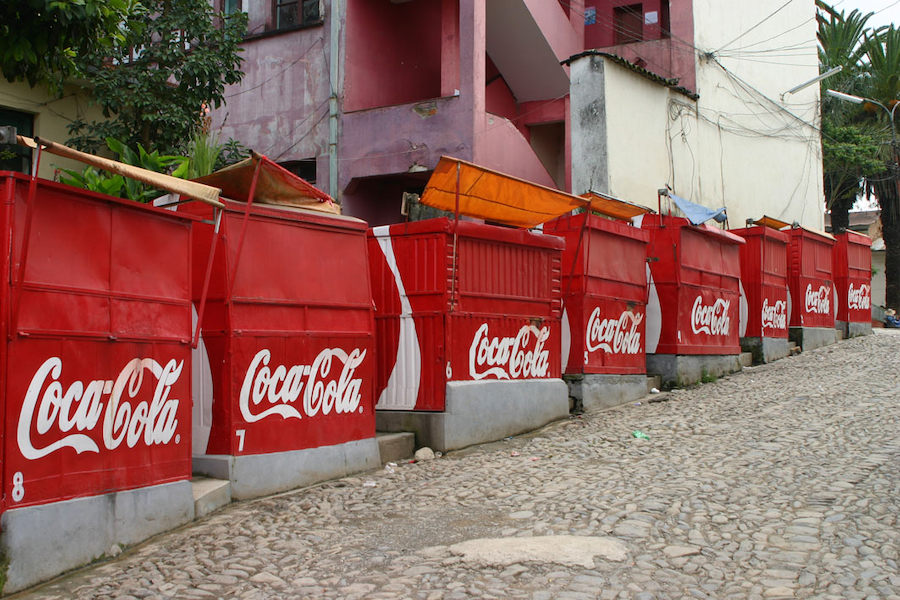
Resource Nationalism: Old Threat, New Opportunities
Resource nationalism, like other components of economic protectionism, has receded since the institutionalization of the Washington consensus and the gradual if unsteady, democratisation of the developing world. The days of aggressive expropriation, the seizing of private assets by governments, are empirically in decline.
Governments, as The Economist point out, are increasingly open to foreign involvement in heavy extraction industries as they seek to exploit the technical, infrastructural, employment and foreign currency advantages of foreign ownership. But rather than a wholesale liberalization, governments are exerting a competitive impulse into contracts: to drive up prices as a means of maximizing revenue while simultaneously assuaging popular nationalism from below. Companies in turn, sensing an opportunity to achieve scale, are turning to Corporate Social Responsibility projects to heighten their attractiveness to prospective countries – and specifically, the people within.
There are exceptions: Zimbabwe’s indigenization policy serves to remind us of the close correlation between authoritarianism (competitive or complete) and state sponsored, often economically destructive, nationalism. It is with this example in mind that Ernst & Young ranked resource nationalism as the number one global risk facing mining and metal companies. Resource nationalism then has not disappeared, but it has been accompanied by pragmatism on the part of governments in developing economies.
Such nationalism should be classified as residual – often latent, and often volatile but rarely catastrophic unless the relationship between foreign entities and governments reaches complete breakdown. However, Coca-Cola’s future expulsion from Bolivia highlights that even the most established MNCs can do little when the tide turns against them, underscoring the need for MNCs to establish positive working relationships.
Corporate Social Responsibility as a Counterweight
The growing consensus of governments that the private ownership of natural resources can be a positive development has had two immediate consequences. First, it has exerted a competitive pressure into foreign entry. In balancing the imperatives of nationalism, revenue maximisation, and macroeconomic performance, governments are cherry picking companies that are acceptable to populations liable to exhibit nationalistic claims – particularly in an economic downturn.
Second, and related to the first, it has forced companies to think creatively about their social-economic contribution – specifically, how they can differentiate themselves from the popular suspicion of MNC behaviour and reduce the risk of forced contract renegotiation or revocation on the part of governments. While philanthropic endeavours have often been seen as part of a wider PR strategy, companies should increasingly see philanthropy as being integrated into their approach to risk management.
As companies come under closer and more frequent scrutiny through the lens of social media, there is a risk of popular discontent colouring their engagement with government. Companies, therefore, must see this as an opportunity to drive support from the ground up. In this view, risk management, and specifically, risk mitigation, has a philanthropic dimension aimed at constructing and maintaining a favourable perception of an MNC’s behaviour. Its success is contingent on a granular and interactive engagement with indigenous populations.
With this in mind, Corporate Social Responsibility (CSR) is set to play a vital role in mitigating the potential risk of increased resource nationalism. Ernst & Young, for instance, recommend that companies should focus on creating direct and sustainable benefits for the host community through pro-active and well organised social and community development programs. While CSR has many critics, as John Ruggie of Harvard University’s Kennedy School of Government points out, the debate over whether CSR should exist is in fact ‘irrelevant today because ‘companies are doing it’ and thus the question is no longer whether but how.
Corporate Social Responsibility: Moving from PR to Risk Management
However, companies have often struggled to create and integrate their CSR endeavours as a reputable part of their brands, struggling to shake off the tag that it is nothing more than PR. Previous cases where companies have used a selective manipulation of information, as well as deliberate misinterpretation of on the ground benefits, has meant that the legitimacy of such initiatives is often undermined.
With the introduction of new technologies and the meteoric rise of social media, penetrating even the most far-flung corners of the world, the landscape in which CSR operates is changing. The reach and real-time capabilities of the technologies that underpin this new environment make it an unforgiving arena, creating the potential for negative perceptions to coalesce around a company quicker than ever before. As companies now begin to recognise the need to gauge a better understanding of the perceptions of the communities in which they operate, they must strive to integrate new technologies if they are able to do justice to the fast swirl of on the ground dynamics.
The example of the successful 50-50 diamond joint venture between Botswana and De Beers highlights that despite aggressive demands by host countries, mutually beneficial relationships can be established. De Beers operations within Botswana work because the government, which is both stable and reliable, provides an effective conduit between De Beers and the population- locking all three into a mutually supportive network, regulated and reinforced through positive feedback loops.
Two additional non-governmental factors also help to explain the exceptional success of the De Beers-Botswana relationship: De Beers is an African company and thus has an economic and emotional interest in Africa’s Development; and from Botswana’s point of view, De Beers operations account for around 30% of total GDP making the partnership vitally important to the continued development of the country. This is, by definition, a mutually beneficial arrangement. It is important not to understate the advantage De Beers holds through the broad cultural and historical heritage it shares with Botswana. Certainly, this has provided advantages in terms of grassroots perception, government relations and understanding which civil society projects to support.
More specifically, it has enabled De Beers to operate in close synchronisation with civil society – allowing it to locate and implement CSR projects that drive social improvement, revenue growth and positive publicity to equal affect. Without the existence of informational, personnel and linguistic commonalities between De-Beer and Botswana, it is doubtful whether such a stable partnership would have endured. For companies moving into more unknown territory, the task is harder.
The relationship, for instance, between Chinese mineral extraction firms and Africa has been characterised more negatively. Social responsibility has not obviously materialised, although Africa has received significant economic gains – specifically infrastructural – from its reciprocal trade with China. Part of this is because weak, and often dysfunctional institutions, coupled with high levels of corruption have made it difficult for Chinese companies to process, implement and maintain social development projects. But equally – if not more – significant is the failure, by certain Chinese companies, to align philanthropic projects with country specific preferences and cultural requirements.
Jill Shankleman in a telling quote (part of a wider report on the impact of Chinese extraction industries abroad) concludes “They (Chinese companies) are supporting philanthropic projects, but in most cases without a clear understanding of how to ensure the acceptability or sustainability of those projects, and have not yet built up the internal expertise to fill these gaps.”
While Chinese companies recognize the business value in ‘building better relations with local communities,’ highlighted by the fact an increasing number are integrating environmental, social and governance criteria into their risk assessment process, it is clear they lack the mechanisms to convert ground level dynamics into effective CSR strategy.
In general however, CSR is increasingly attempting to align itself with on the ground perceptions. For example, Shell in Nigeria now annually administer an independent reputation tracker for the communities in which they work. However, with the proliferation of new technologies, discussions, opinions and views are no longer bound by the constraints they once were, and are able to disperse, permeate and coalesce much quicker. Against this backdrop, an annual snapshot is simply too static, too shallow and too immobile to serve as the foundation of a well-developed CSR programme.
New Approach, New opportunities
A two way dialogue between foreign companies and host countries can only benefit the latter in terms of cultural assimilation. The closer companies listen to, and engage with, host country populations, the easier they will find it to adjust to an often specific set of preferences. This is true of CSR Projects but also relates more widely to market entry strategy. The most successful exponents – like Tesco in China, and McDonald’s in Russia – operate fluid and relatively decentralised models characterised by an ability to react quickly when out of kilter with market expectations.
Likewise, the failure of McDonald’s to turn a profit in Bolivia, and their subsequent exit, in the early 2000s is widely attributed to a cultural boycott originating in a basic failure to adjust to local market conditions. The best protection MNCs have against cultural boycott or exclusive nationalism is by closely listening and reacting to how they are perceived combined with a dedicated and collaborative ‘on the ground’ CSR strategy – rather than flaky PR exercises. When implemented correctly, CSR can be a site of unique competitive advantage. Model CSR strategies will use the returns from social development projects to drive a closer market alignment and long-term local acceptance. This benefits both country and company.
Integrating social media and collaboration based technologies has the potential to help CRS programmes achieve this: allowing for better knowledge management by connecting corporations with key stakeholders in the community and facilitating open communication. Thus, in creating a more robust, accessible and transparent conduit with the host population, a socially driven CSR has the potential to raise both the credibility and visibility of a company’s initiative. To ensure that a socially based CSR programme can effectively function, an organisation must ensure that relevant local stakeholders and online communities are correctly identified.
Once identified, corporations can actively engage with their communities, be part of the ongoing conversation; listening, contributing and subsequently providing relevant feedback, while integrating information into products, services and future dialogues. As resource nationalism continues to stay on the radar for multinational companies, for both those considering entry from the sidelines and those already entrenched, they must develop risk management initiatives which can provide an effective counterweight. CSR initiatives that are able to absorb and adjust to local dynamics, host community perceptions and national sentiment have this potential.
The adoption of new technologies, with their real time capabilities and deep market penetration, provide a chance for CSR programmes to restructure – essential if companies are indeed going to mitigate the risk of resource nationalism, turning threat into an opportunity.


